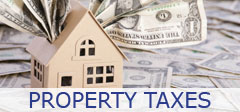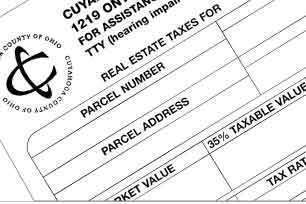
Taxes

Cuyahoga County OHGenWeb |

| Taxes |
 |
Tax records can be used in place of censuses before 1820 or to cover the years between censuses. Only people who owned taxable property are listed. However, this includes more than real estate. |
|
Taxes have been collected pretty much forever. There have been federal, state, county, and local taxes. Ancestry has a lot of IRS Tax Assessments 1862-1918, but Ohio is not included. Ohio state began sales taxes in 1934, but income taxes did not begin until 1960. These records would not be easily available. Recent municpal taxes are not likely very available either. However, the old township taxes may be found in the early records. It takes a bit of perseverance. However, the records we use most are the county taxes which began very early. The County tax books at Cuyahoga County archives have three sections. The first is for real property. Some of these are divided between resident and non-resident. (This is important for researchers trying to prove residency, as many people owned property who may have never lived in Ohio.) The second section is for personal property. This included anyone of age who owned property such as horses and cows. More taxable items were added as time went on, so could include watches, pianos, carriages, etc. The third section is for occupations. Most frequently this includes physicians and attorneys. Later there may be engineers and other highly skilled practitioners. These follow one after the other within each township listing. Another type of tax, found especially in Pennsylvania is for Freemen -- those who are not married and do not hold property. They have often just come of age. Other than the property owned, one can get much other information from tax records. A good estimate of a death year may be indicated by the wife suddenly paying taxes. When a person comes of age might be estimated by his first appearance in the taxes. A tax assessor may make marginal notes or use titles such as jr or sr or younger. (This does not always indicate a relationship, but often an age difference.) Taxes were collected by the Assessor or Treasurer. The records were held by the Auditor. He was required to make two copies - one for his office, and one for the treasurer. The treasurer copy is called a duplicate. These are the ones most likely to be discovered. The original records sometimes exist, and they are in the order collected. The duplicate records are usually in some sort of alphabetical order for ease of use. Additionally one might find delnquent taxes. They are often printed in the newspaper. Sometimes delinquent ones are added into the following year in the tax records indicating late payment. Some Links of Interest (all off-site)
|
|
© Cuyahoga County OHGenWeb 2013-24. All Rights Reserved. |